Climatic-zonal communities
Temperature and precipitation are the primary determinants of where and what kind of communities are found in different areas.
 |
| Communities determined by climatic zone |
 |
| Distribution of precipitation |
Tree communities
1. Tatar maple-oak communities (tatárjuharos lösztölgyesek):
-found in small areas of the plains
- 2 layer canopy
- rich understory
 |
| Tatar maple |
2. Turkey oak communities (cseres-kocsánytalan tölgyesek)
-most widespread community
-250-500m
-typically found in hilly regions
-open canopy
-rich understory
 |
| Turkey oak forest, Pannon |
3. Hornbeam-oak communities (gyertyános-tölgyesek)
-widespread, except on the Great Plains
-400-600m
-usually 2 canopy levels (upper level oak, lower level hornbeam)
-closed canopy
-understory primarily plants that grow from bulbs (early spring)
-summer/fall understory limited to fungus
 |
| Hornbeam-oak |
4. Beech communities (bükkösök)
-above 600m
-closed canopy
-very limited shrub layer
-many bulb plants in understory
 |
| Beech |
 |
| Beech |
5. Coniferous
-very limited to hilly areas near the Austian borders (Alpokalja) and the Őrség
- lots of firs (jegenye) and spruce (luc)
-other coniferous forests are planted
 |
| Spruce-fir forest |
Intrazonal communities
These communities are found between the climatic-zonal communities and depend upon local conditions, such as soil, water availability, hills, etc. They can be tree communities or treeless communities
1. Sandy areas
- in these areas, the sand is the determining factor
- sand is loose and grains are relatively large (mm)
- water is not retained in sand
- sand has low thermal capacity, therefore heats up and cools quickly
- herbaceous plants have deep roots and little surface for evaporation
Open sandy grasslands
- dry, warm microclimates, far from water and strongly affected by the wind
- a typical grassy species is Hungarian fescue (magyarcsenkesz), which helps to stabilize moving sand dunes with its deep root system
 |
| Hungarian fescue |
 |
| feather grass |
- in sandy regions that contain lots of calcium carbonate feather grass (árvalányhaj) is a typical species, whereas in other open sandy areas grey hair-grass (ezüstperje) is common
 |
| grey hair-grass |
Closed sandy grasslands
- closer to groundwater, through decades of biological weathering contain a significant amount of humus
- greater species richness than in the open sandy grasslands
- primarily furrowed fescue (barázdált csenkesz), as well as a type of feather grass (kunkorgó), bridal veil (pusztai árvalányhaj), various types of Astralagus (csüdfű) and sand iris (homoki nőszirom)
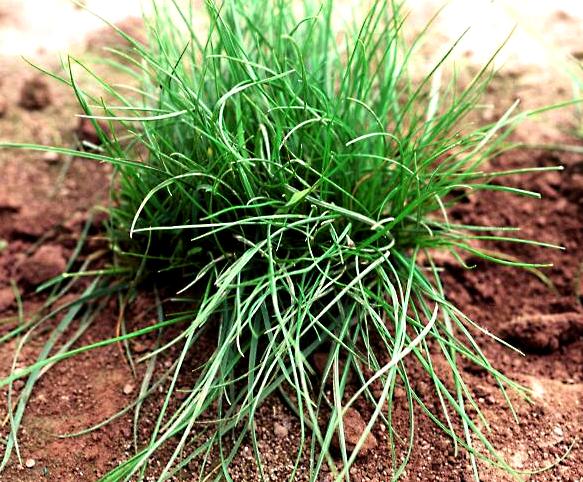 |
| furrowed fescue |
 |
| kunkorgó |
 |
| bridal veil |
 |
| sand iris |
 |
| Astralagus |
In areas where there is grazing (legelés), the plant composition changes to plants that can better withstand being trod upon and grazed. Sandy communities are easily degraded by the effects of physical disturbance (vehicles), as well as fertilization. In these areas annual grasses , such as wild rye quickly populate the area.
Succession in sandy areas progresses with small shrub-sized junipers (borókák), then white poplar (fehér nyár) forming open parklands, which gradually replace the sand dunes.
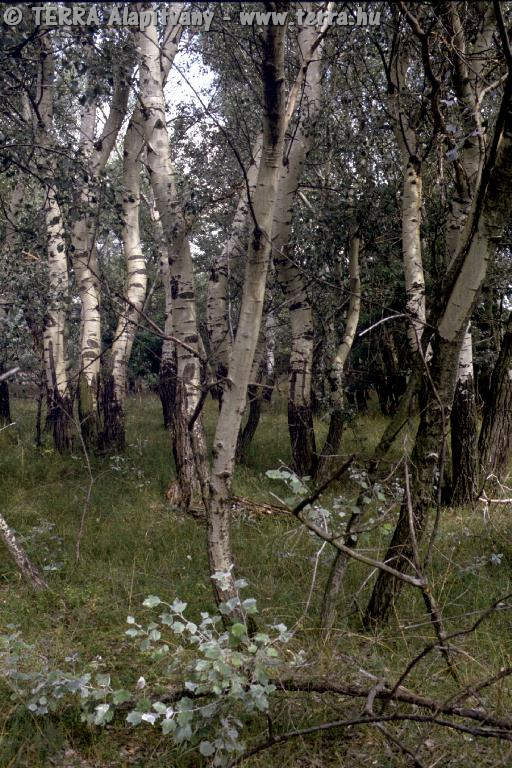 |
| Open juniper-poplar parklands |
In about another 100 years, in the area with the highest levels of groundwater, succession will lead to the climax of
closed sandy oak communities.
 |
| Closed sandy oak community |
2. Saline (alkaline) areas
-saline areas are the result of interactions between water and the soil: salts (particularly sodium) move toward the soil surface when water evaporation is high during summer heat
- high salt concentrations make the soil's physical characteristics quite unfavourable for air and water circulation
- saline soils have a basic pH
- due to the saline soils characteristics, the plants are those that can survive in a semi-desert environment and are drought-resistant: roots have good water absorption abilities, above the soil the plants are spreading succulents
-many of the plants are also halophytes (salt-lovers!)
- Hungary has many saline areas, typically the Hortobágy, Kiskunság and around the Körös rivers
- two types of saline areas exist: wet, where the area remains covered with water for longer periods, and dry, where the area is only covered with water early in the spring
- typical plants of wet saline areas (szikfok) include European alkali grass (sziki mézpázsit) and chamomile (orvosi székfű/kamilla)
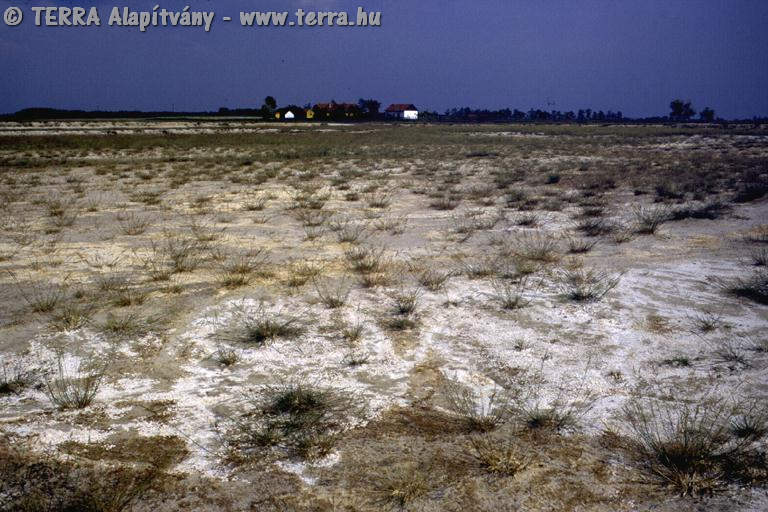 |
| wet saline area |
 |
| European alkali grass |
 |
| Chamomile |
- succession in wet areas leads to the formation of closed saline areas, which are home to a species of yarrow (sziki cickafark), glasswort (sziksófű), Ranunculus lateriflorus - it has no common name in English - (sziki boglárka) among others
 |
| Yarrow |
 |
| Glasswort |
(6).jpg) |
| Ranunculus |
- typical plants of dry saline areas (vakszik) include Western pontic (bárányparéj) and chamomile (orvosi székfű/kamilla)
 |
| Dry saline area |
 |
| Western pontic |
- in the Hortobágy and Kiskunság, succession of dry salines is limited by grazing, which removes organic material from the area, thus slowing the rate of succession and the area does not develop into a saline oak forest
 |
| Grazing on the Hortobágy |
 |
| Saline oak forest |
3. Water-based communities
-Floating aquatic communities develop in areas of deeper water in lakes and slow-moving areas of rivers. They include species of duckweed (békalencse), water soldier (kolokán), frogbit (békatutaj) and a variety of algae
 |
| Duckweed |
 |
| Water soldier |
 |
| Frogbit |
-Rooted aquatic communities develop in shallower waters. Typically plant species include European white water lily (fehér tünderrozsa), sago pondweed (hináros békaszölő) and water violet (békaliliom) among other species
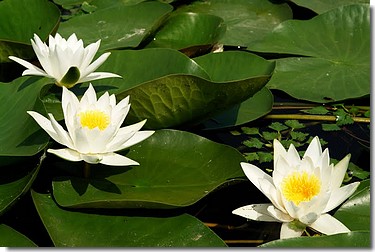 |
| White water lily |
 |
| Sago pondweed |
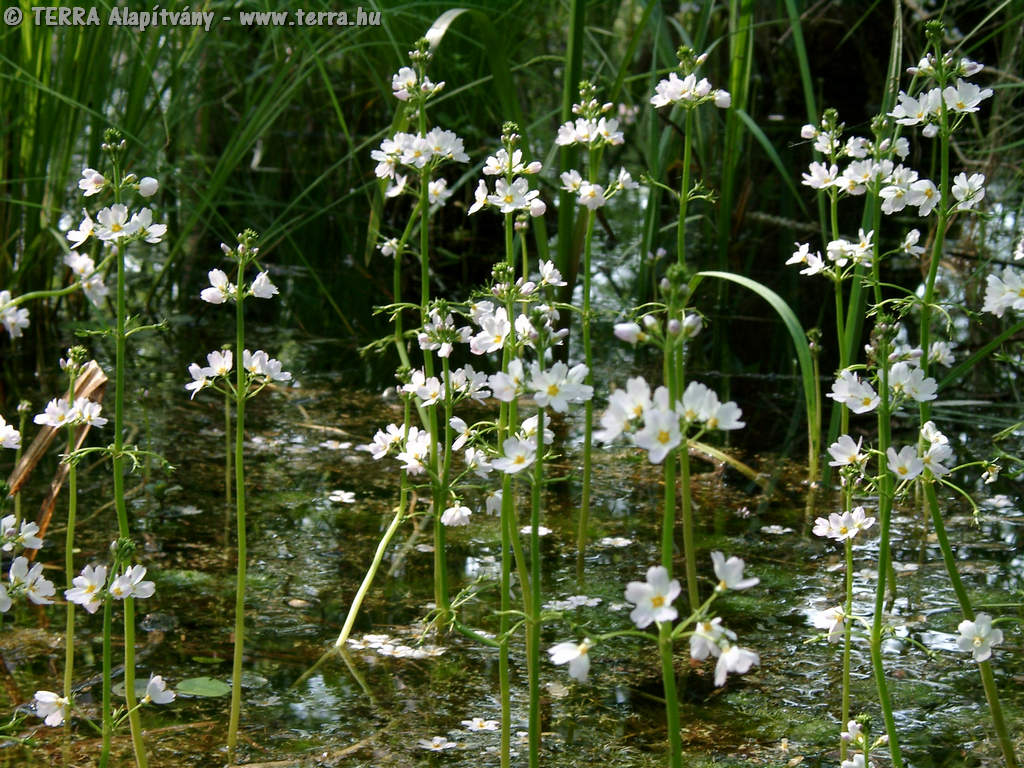 |
| Water violet |
- Closer to the shore, where the water is only a meter or two deep, reeds (nádasok) dominate, along with clubweed (tavi káka) and bulrushes (gyékény). They play an important role in preventing physical and chemical pollution from entering the water.
 |
| Reed community |
.jpg) |
| Common reed |
 |
| Clubweed |
 |
| Bulrushes |
- In the very shallow areas, where standing water might be only seasonal, there are sedge communities which separate the reeds from the marshes or bogs. A variety of different sedges are found in these communities
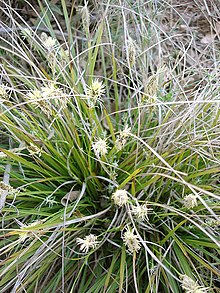 |
| Sedge |
- Beyond the sedges, in areas where standing, stagant water remains due to poor drainage,
moorlands, fens or
bogs (láprét) appear. In the underlying, oxygen-poor sediment, peat develops from the dead material. Sphagnum or peat moss grows on the peat, along with other species. West of the Danube, these usually include Davall's sedge (lápi sás), common rush (szittyó) and blue moorgrass (lápi núlfarkfű), while east of the Danube purple moorgrass (kékperje), carnation sedge (muharsás) and plume thistle (csermelyaszat) are more common
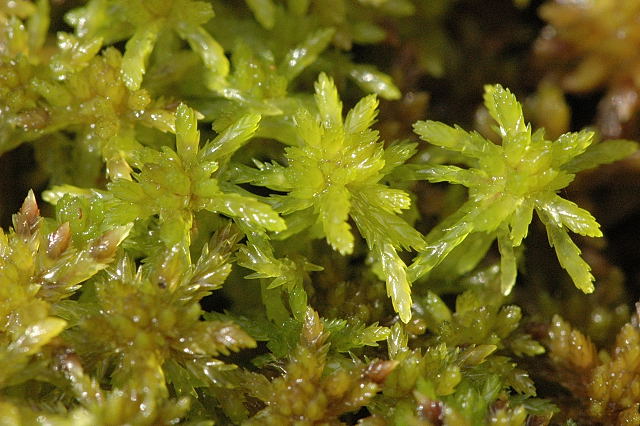 |
| Sphagnum |
 |
| Davall's sedge |
 |
| Common rush |
- Swamps are areas covered with water through part of the year, but dry out in the summer, thus there is no peat formation and succession can proceed more quickly. Swamp meadows are maintained by mowing or grazing. Various types of swamp meadow communities include meadow foxtail (ecsetpázsitos), meadow fescue (réti csenkeszes) and tussock grass (sédbúzás) communities
 |
| Meadow foxtail community |
 |
| Meadow fescue |
 |
| Tussock grass community |
- In areas with lots of water,
willow communities (bokorfűzes)are the next step in succession. The improvement in soil, then allows for the formation of forests.
 |
| Willow community |
The type of forest, once again depends on whether the water is stagnant or circulating. In areas with stagnant water,
swamp forests form. Due to drainage programs very few have remained in Hungary, only in the Hanság region and between the Danube and the Tisza rivers. The typical tree species in these forests is alder (éger)
 |
| Alder swamp forest |
-
Gallery/riparian forests (ligeterdő) are areas with periodic flooding, along the banks of rivers and streams. In lower lying areas, willow and poplar dominate along with many creepers (kuszónövény), while in higher areas oak, ash (kőris) and elm (szil), with a thick understory are typical.
4. Communities determined by hills and bedrock
-Open rocky communities are pioneer communities made up of mosses and liches, as well as other endemic species. Species vary depending on the type of bedrock, eg. silicate (Balaton, Bükk), limestone (Bükk, Aggtelek) or dolomite (Buda, Vértes, Keszthely)
-These are succeeded by
alpine meadows (lejtősztyeprétek), which have a thicker humus layer. These typically contain tufted grasses, especially fescue and feather grass species, as well as many species from sandy areas. In this community, species usually have both spring and autumn flowering periods.
- The increase of humus, particularly in ground hollows allows for the appearances of woody plants. In the oak forest zone, on southern dolomite and limestone slopes downy oak forests (molyhos tölgyesek) develop.
 |
| Downy oak |
These forests contain lots of shrubs and grasses. On the peaks of hills and along the tops of the ranges open canopy linden-ash (hárs-kőris) forests develop as the climax community.
 |
| Linden tree |
These forests also include field maple (mezei juhar) and dogwood (som).
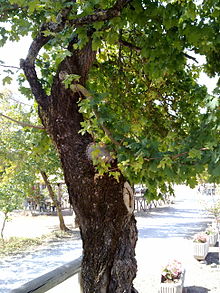 |
| Field maple (not in a field!) |
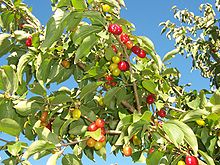 |
| Dogwood |
Shrubs include hawthorn (galagonya) and hazelnut (mogyoró), while the herb layer includes many protected species, like yellow monkshood (méregölő sisakvirág), melic grass (magas gyöngyperje) and shiny geranium (csillogó golyaorr)
 |
| Hawthorn |
 |
| Yellow monkshood |
 |
| Melic grass |
 |
| Shiny geranium |
- Forests play an importat role in limiting erosion on the hill slopes.
5. Alpine Mowed Meadows
- often the meadows were formed by natural means (eg. after a fire) about a century ago
- now most of the meadows are maintained by mowing or grazing (if there are enough animals, esp. deer)
- these meadows are home to numerous rare species such as red fescue (vörös csenkesz) and sheep fescue (juhcsenkesz), meadow foxtail (réti ecsetpázsit), spreading bellflower (terebélyes harangvirág) and tufted milkwort (üstökös pacsirtafű)
 |
| Red fescue |
 |
| Sheep fescue |
 |
| Meadow foxtail |
 |
| Spreading bellflower |
 |
| Tufted milkwort |
6. Ravine forests (szurdokerdők)
- these are found in deep, steep-sided valleys
- they are found in the hornbeam-oak or the beech zones- they are typically cool, damp and humid
- canopy is formed by beech, ash and mountain maple
- shrubs are few, often missing
- at the base of the valleys tehre are often lots of nitrogen-loving plants, due to the build up of a rich humus layer, like common nettle (nagy csalán) and greater celandine (vérehulló fecskefű).
 |
| Common nettle |
 |
| Greater celandine |
- due to cooler temperatures, there are often rare species typical of cooler zones, like alpine clematis (havasi iszalag) and species that are remnants from the last ice age, like alpine yellow violet (sárga ibolya) and alpine rock-cress (havasi ikravirág)
 |
| Alpine clematis |
 |
| Alpine yellow violet |
 |
| Alpine rock-cress |
7. High-water communities (not necessarily what they are really called in English)
- in these communities the water table is close to the surface
- soils are rich in nutrients and water
- interspersed with streams and canals
- 2 layers of herbaceous plants are found here
- all the plants are sensitive to mowing and grazing
- species include butterbur (vörös acsalapu), garden loosestrife (közönséges lizinka), great willowherb (borzas füzike) and cabbage thistle (halovány aszat)
 |
| Butterbur |
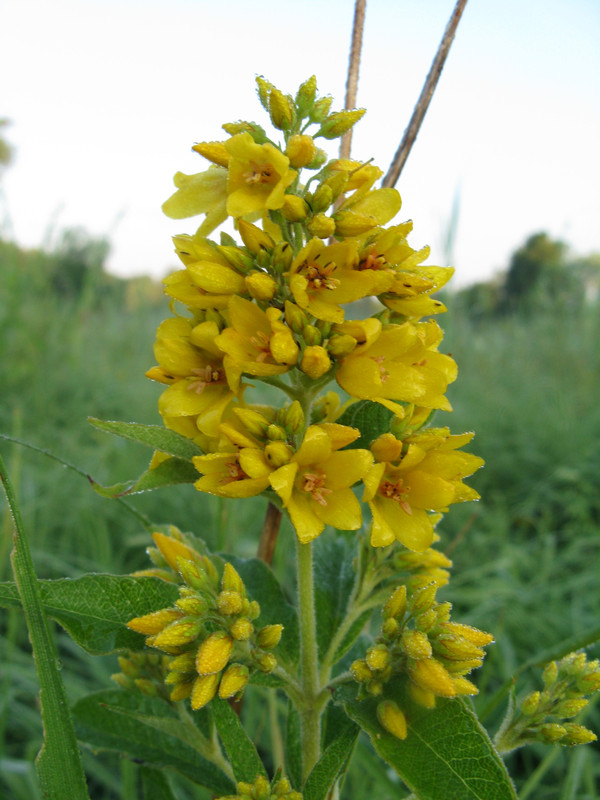 |
| Garden loosestrife |
 |
| Great willowherb |
 |
| Cabbage thistle |
8. Weed communities
- the plants found in these communities are considered weeds because of their characteristics
- most live in other areas, as members of those communities, and are not considered weeds there.
- these species usually have wide ranges of tolerance, grow fast, rely on readily available nutrients, and have high reproductive rates
- human activity opens habitats for them, where they enter and populate an area rapidly (r-strategists)
- many different species can be included here, but most are annuals and survive well in disturbed soils
- soil can be disturbed by plowing and planting, or it can be degraded by human activities, particularly rubbish and trampling
- the weeds found in these 2 areas can be different, but species of goosefoot (libatopfélék), species of amaranth (disnoparájfajok) and various grasses are common in both
 |
| A species of amaranth |
 |
| White goosefoot |
9. Planted communities
- typically planted communities are unsustainable without human efforts in the long run
- many planted communities are monocultures and thus face higher instability, as the whole community can be destroyed by 1 negative event (eg. fungal infection, insect infestation, etc)
- even in multiculure communities, stability is low, because biodiversity is much less than in a natural system
 |
| Planted forest |



















(6).jpg)











.jpg)








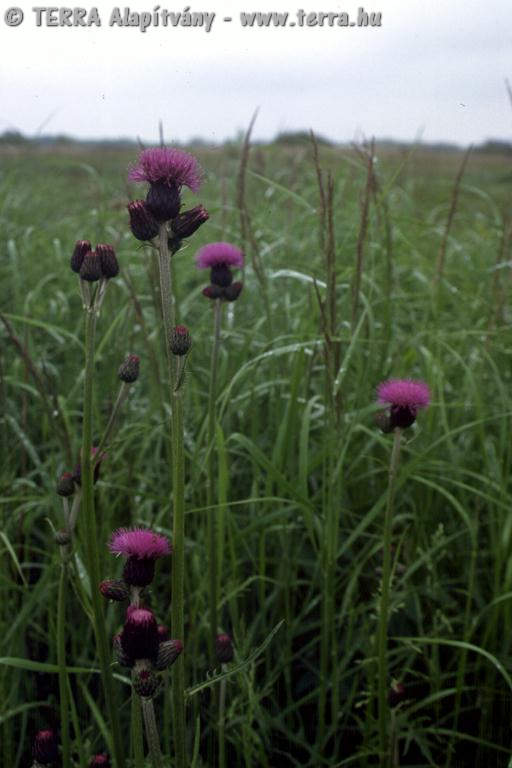















No comments:
Post a Comment